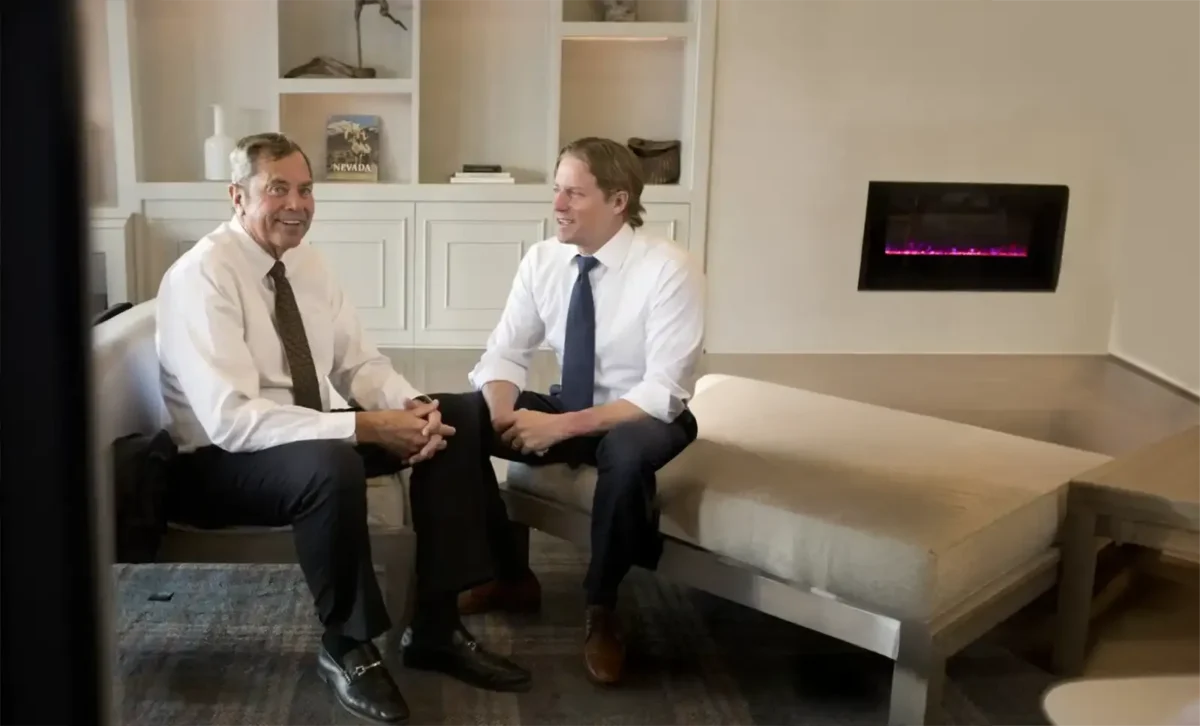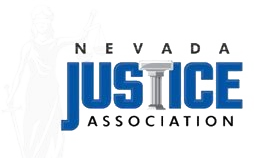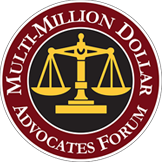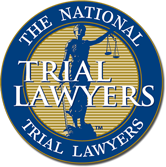- July 26 2025
- | Car Accidents

In cities like Reno and Las Vegas, ride-sharing services like Uber and Lyft have become an integral part of our daily lives. They offer a convenient, accessible way to navigate the city, get to the airport, or enjoy a night out safely. We use these services with an inherent trust that we will get from point A to point B without incident.
When that trust is broken by an accident, the experience can be deeply unsettling. In an instant, a routine ride can turn into a chaotic scene involving physical injuries, emotional distress, and immense confusion. Beyond the immediate shock, a pressing and complicated question arises: Who is responsible for the damages?
Unlike a typical car accident involving two private vehicles, a crash involving a ride-sharing vehicle introduces multiple layers of insurance and complex liability rules. Understanding Nevada ride-sharing accident laws & liability can help protect your rights and ensure you can focus on what matters most: your recovery.
The Three “Periods” of Ride-Sharing Insurance
The core of Nevada’s ride-sharing law (NRS 690B.470) revolves around what the driver was doing at the exact moment of the accident. To determine which insurance policy is active, the law breaks a driver’s time into three distinct “periods.” Identifying the correct period is critical, as it dictates the type and amount of available insurance coverage.
Period 0: The Driver is Offline
If an Uber or Lyft driver is using their vehicle for personal reasons and does not have the app turned on, they are considered to be in “Period 0.” In this scenario, any accident they cause is treated like any other car wreck. The ride-sharing company (e.g., Uber or Lyft) has no involvement or liability. Any recourse for an injured party must be pursued through the driver’s personal auto insurance policy.
Period 1: The App is On, Awaiting a Request
This period begins the moment a driver logs into the app and is available to accept a ride request, but has not yet been matched with a passenger. They are, in essence, waiting for work.
During Period 1, Nevada law requires a baseline of liability coverage. If an accident occurs, the ride-sharing company’s contingent liability policy is meant to apply. This coverage is typically:
- $25,000 for bodily injury per person
- $50,000 for bodily injury per accident
- $20,000 for property damage
This coverage often only kicks in if the driver’s personal insurance policy denies the claim (which they frequently do, as most personal policies have exclusions for commercial driving) or if the damages exceed the driver’s personal policy limits.
Periods 2 & 3: A Ride is Accepted and in Progress
These are the periods with the most substantial insurance coverage.
- Period 2 begins when the driver accepts a ride request and is on their way to pick up the passenger.
- Period 3 begins the moment the passenger enters the vehicle and lasts until they are dropped off at their destination.
During both of these periods, the ride-sharing company’s full commercial insurance policy is in effect. Nevada law mandates that this policy provide at least $1 million in liability coverage. This policy covers injuries or damages suffered by the passenger, pedestrians, cyclists, or occupants of other vehicles involved in the accident.
Importantly, this $1 million policy also includes Uninsured/Underinsured Motorist (UM/UIM) coverage. This protects you if the at-fault driver was the other vehicle, and that driver either had no insurance or not enough insurance to cover your injuries.
Your Rights in Different Scenarios
In this frightening situation, it may be reassuring to know that as a passenger, you are afforded the highest level of protection under Nevada’s ride-sharing insurance laws.
If You Are a Passenger in a Ride-Sharing Vehicle:
As a passenger, your well-being is the top priority. If you are injured in an accident, you are covered under the ride-sharing company’s $1 million policy (Period 3). This applies whether your driver or another motorist was at fault. The path to compensation is generally more direct for passengers, but it is not without potential complications.
If You Are in Another Vehicle, a Pedestrian, or a Cyclist Hit by a Ride-Sharing Driver:
Your situation depends entirely on which “period” the ride-sharing driver was in at the time of the collision.
- If the driver was in Period 0 (offline), you would file a claim against their personal insurance.
- If the driver was in Period 1 (online, awaiting a request), you would pursue compensation through their personal policy first, with the ride-sharing company’s contingent policy as a backup.
- If the driver was in Period 2 or 3 (on their way to or with a passenger), you would be covered by the company’s $1 million policy.
If You Are a Ride-Sharing Driver
As a driver, you are in a uniquely challenging position after an accident. You may be dealing with your own injuries, significant damage to your vehicle—which is your source of income—and the stress of potential liability. The insurance process for you is often the most complicated.
Your path to compensation depends heavily on who was at fault and which “period” you were in.
- Vehicle Damage: The ride-sharing company’s policy may offer contingent collision coverage, but it often comes with a very high deductible (e.g., $2,500). Furthermore, your personal auto insurance will likely deny your claim due to a “commercial use” exclusion, potentially even canceling your policy.
- Your Own Injuries: If another driver was at fault, you would file a claim against their insurance. If you were at fault, the ride-sharing company’s $1 million liability policy does not cover your own injuries. You would need to rely on your personal health insurance or any optional Medical Payments (MedPay) coverage you might have on your auto policy.
Because of these fine details, it is critical for you to understand the specific terms of both your personal policy and the policy provided by the ride-sharing company. The potential for a denied claim is high, leaving you to cover massive expenses out of pocket.
The Real Challenge: Going Through the Insurance Process
Knowing the law is one thing; getting an insurance company to honor its obligations is another. Ride-sharing companies and their massive insurance carriers are for-profit businesses. Their goal is to protect their bottom line by minimizing payouts. After an accident, you may feel like you’re being cared for, but you are often dealing with adjusters trained to limit the company’s financial exposure.
Even with clear laws, insurers may create roadblocks, including:
- Disputing the Period: The insurer may argue the driver was in a period with less coverage (e.g., claiming they were in Period 1 instead of Period 2) to reduce their liability.
- Offering a Quick, Lowball Settlement: An adjuster might contact you shortly after the accident, offering a fast check before the full extent of your injuries, lost wages, and future medical needs are known. Accepting this offer forfeits your right to seek further compensation.
- Delaying Tactics: Insurers may drag out the process, hoping your financial desperation will force you to accept an unfair offer.
- Misrepresenting Your Rights: They may incorrectly state what is and is not covered, counting on your lack of familiarity with insurance law.
When an insurer acts unfairly or fails to honor a legitimate policy, this may constitute insurance bad faith. Facing a multi-billion-dollar corporation and its team of lawyers on your own is an intimidating and often impossible task, especially when you should be focused on healing.
Find Strength and Clarity with Leverty & Associates Law
Dealing with a ride-sharing accident claim can be frustrating. At Leverty & Associates Law, our profound understanding of Nevada insurance law is the bedrock of our firm. We know the unfair techniques insurers use to deny and diminish what our clients rightfully deserve, and we are dedicated to counteracting them.
Our team-oriented approach means that you benefit from over 100 years of combined legal experience focused on one thing: fighting for people who have been treated unfairly by insurance companies. We are not a run-of-the-mill personal injury firm; our proficiency in insurance coverage analysis sets us apart and allows us to build the strongest possible case for your recovery. We are committed to providing compassionate, attentive, and dedicated representation to every client.
If you or a loved one has been injured in a ride-sharing accident in Nevada, let our team of Reno rideshare accident lawyers stand with you. For a free, no-obligation consultation to discuss your case, please call our Reno office at (775) 322-6636.



 With his master’s in insurance law, Patrick routinely helps individuals and businesses who are having issues with their insurance company. He also has extensive experience with personal injury actions, complex tort actions, product liability matters, and class actions. Patrick Leverty is rated AV by Martindale Hubbell (the highest rating) and has been granted membership in the Million Dollar Advocate Forum, and Multi-Million Dollar Advocate Forum. Patrick Leverty has been certified as a Personal Injury Specialist by the State Bar of Nevada. [
With his master’s in insurance law, Patrick routinely helps individuals and businesses who are having issues with their insurance company. He also has extensive experience with personal injury actions, complex tort actions, product liability matters, and class actions. Patrick Leverty is rated AV by Martindale Hubbell (the highest rating) and has been granted membership in the Million Dollar Advocate Forum, and Multi-Million Dollar Advocate Forum. Patrick Leverty has been certified as a Personal Injury Specialist by the State Bar of Nevada. [ 



